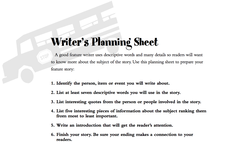MS. ELIAS TECHNOLOGY @KEEPINGUPWIYHTECHNOLOY
The effect of modern technology has been felt strongly in the newspaper world. The changes start with news gathering. Instead of using a pay phone or racing back to the newsroom to type copy, reporters now use cell phones or laptop computers to relay their stories from the scene. In the midst of a breaking news story, it’s not unusual to see dozens of newspeople typing out their text to meet a rush deadline.
Computers have changed the way departments in the newspaper are organized. Rather than hand-carrying a story from reporter to editor to layout artist, newspapers now shift a story electronically from computer to computer, sometimes without putting it on paper until it’s finally printed in the newspaper. News from around the world is gathered from news services that send stories and photos over telephone lines or via satellite. Information, including press releases, is sent over fax machines and e-mailed to reporters and editors. (A press release is a document used by civic groups, businesses, advertisers and private citizens to get information to newspapers.)
Telecommunications technology is bringing news from around the world better and faster. Information is transmitted at high speed via satellite, telephone lines, microwave links and fiber-optic cables. Computers exchange data via high-speed modems over phone lines and satellites.
Computers have changed the way departments in the newspaper are organized. Rather than hand-carrying a story from reporter to editor to layout artist, newspapers now shift a story electronically from computer to computer, sometimes without putting it on paper until it’s finally printed in the newspaper. News from around the world is gathered from news services that send stories and photos over telephone lines or via satellite. Information, including press releases, is sent over fax machines and e-mailed to reporters and editors. (A press release is a document used by civic groups, businesses, advertisers and private citizens to get information to newspapers.)
Telecommunications technology is bringing news from around the world better and faster. Information is transmitted at high speed via satellite, telephone lines, microwave links and fiber-optic cables. Computers exchange data via high-speed modems over phone lines and satellites.
Ideas and topics for our school newspaper
Spotlight interview
• Interview a student or a group and write an article about them.
Student life
• Sports teams
• School clubs
• Teachers
• Administrators
• School changes
• Cafeteria staff
• Cafeteria food
• Extra curricular activities
• Field trips
• Upcoming events and activities
Popular culture
• Latest music
• Popular movies
• Good books
• Interesting art
• Reviews
• Recommendations
History
• The founding of the school
• The history of the school name
• The history of the school sports team
• Before and after photos of the school building(s)
Local news
• Interesting news
• Trending topics
• Interview the mayor or city council
• Interview other important groups or people in your town or city
Articles by students
Ask students to write opinion articles, letters to the editor, and editorials. Some examples:
• Opinions on new governmental policies
• Stories that are trending
• Social issues like dating, religion, diversity etc.
• School policy and rules
• School classes and subjects
• What makes a good teacher/principal?
• What makes a good student?
Self help
• How to make friends
• How to work together
• How to overcome your biggest fear
• How to kick bad habits
• How to deal with peer pressure
• How to approach the principal
• How to study for finals
• How to get better grades
• Study tips
Other ideas
• Comics (Student drawn ones)
• Guest articles (from staff and faculty)
• Contests
• Puzzles
• Quizzes
• Interview a student or a group and write an article about them.
Student life
• Sports teams
• School clubs
• Teachers
• Administrators
• School changes
• Cafeteria staff
• Cafeteria food
• Extra curricular activities
• Field trips
• Upcoming events and activities
Popular culture
• Latest music
• Popular movies
• Good books
• Interesting art
• Reviews
• Recommendations
History
• The founding of the school
• The history of the school name
• The history of the school sports team
• Before and after photos of the school building(s)
Local news
• Interesting news
• Trending topics
• Interview the mayor or city council
• Interview other important groups or people in your town or city
Articles by students
Ask students to write opinion articles, letters to the editor, and editorials. Some examples:
• Opinions on new governmental policies
• Stories that are trending
• Social issues like dating, religion, diversity etc.
• School policy and rules
• School classes and subjects
• What makes a good teacher/principal?
• What makes a good student?
Self help
• How to make friends
• How to work together
• How to overcome your biggest fear
• How to kick bad habits
• How to deal with peer pressure
• How to approach the principal
• How to study for finals
• How to get better grades
• Study tips
Other ideas
• Comics (Student drawn ones)
• Guest articles (from staff and faculty)
• Contests
• Puzzles
• Quizzes
The inverted pyramid is a widely used method of journalistic writing. It refers to 'front loading' an article so that the reader receives the most important information first, or on top. The article then proceeds with explanatory and supporting details in the order of most to least important.


